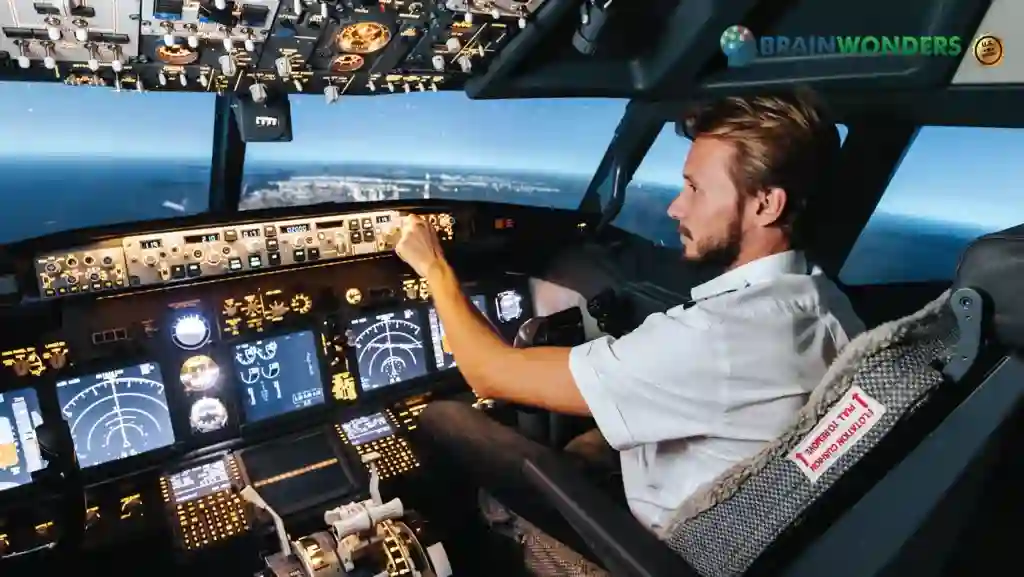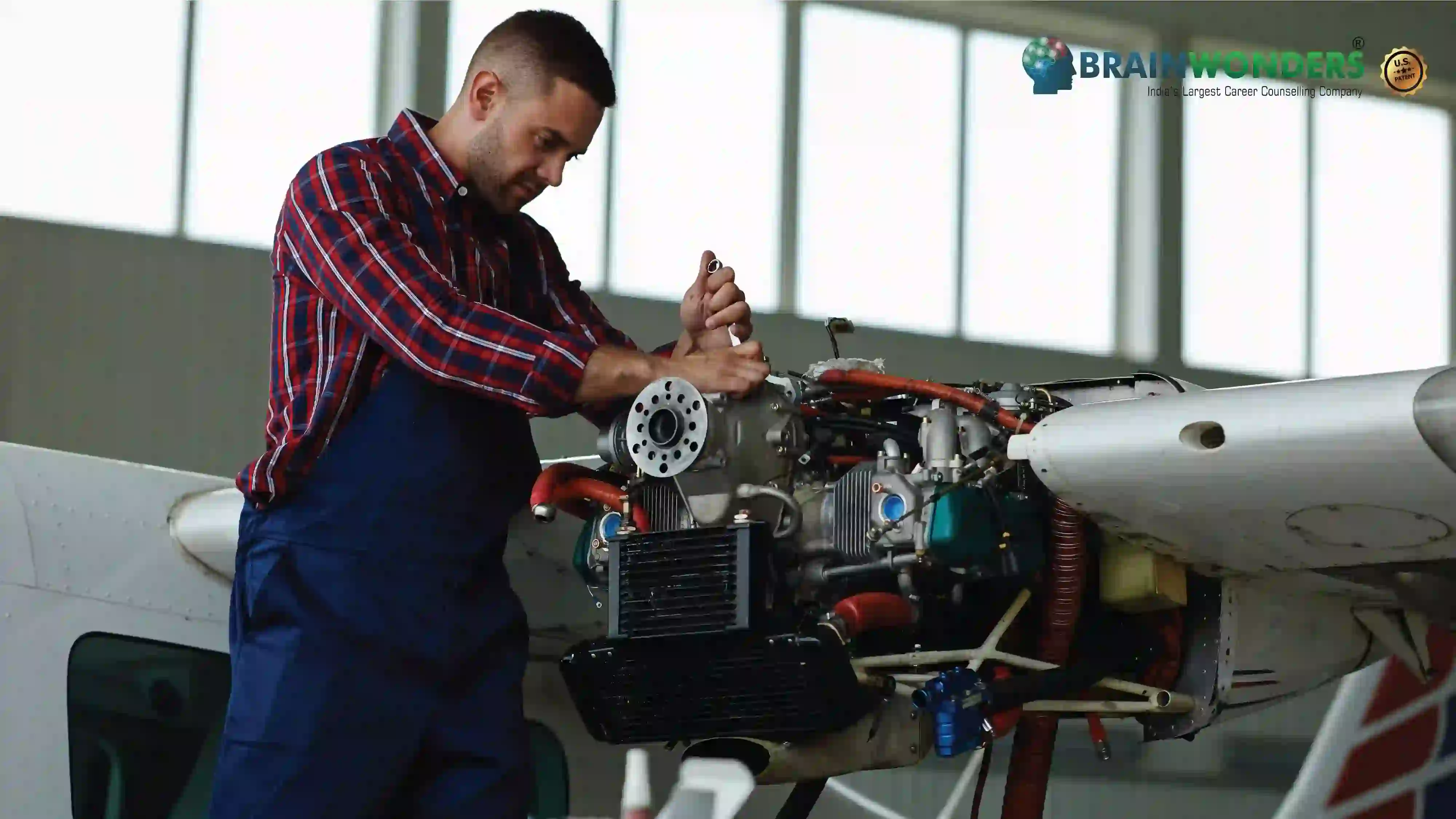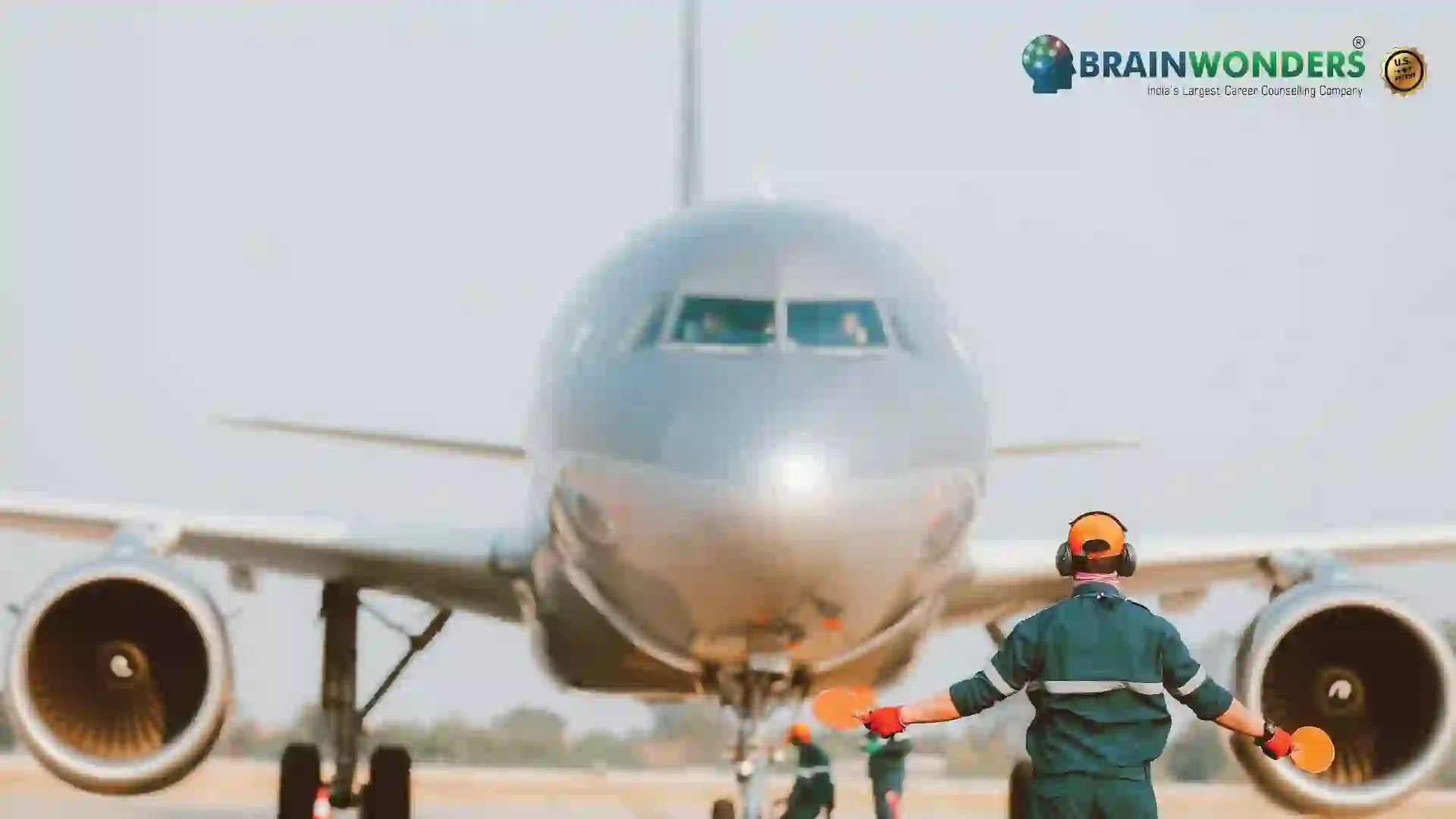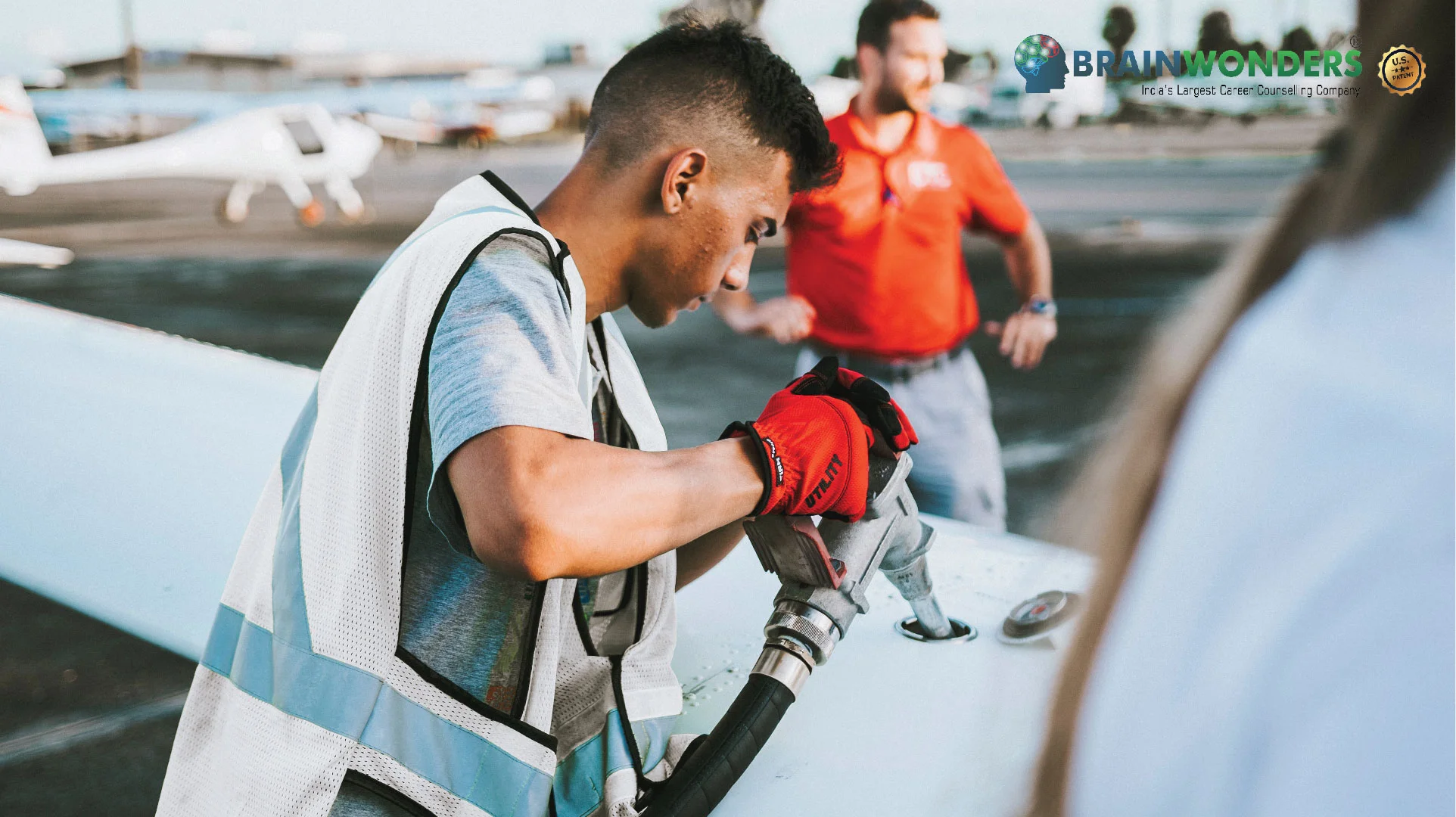How to become an Airline Captain
Overview, Courses, Exam, Colleges, Pathways, Salary

Overview
Who is Airline Captain ?
A Pilot is an Air Crew Officer who controls the flight of an aircraft. An airline captain is the highest-ranking pilot in an airline flight crew. They have ultimate responsibility for the safety and operation of the aircraft during flight. Aviator, Commuter Pilot, Aircraft Pilot, Airline Pilot, Airline Transport Pilot, and Airline Captain are some of the other names for it. They operate and navigate airplanes, helicopters, and other types of aircraft to transport people and cargo on fixed schedules. Airline captain along with the co-pilot or first officer make the cockpit crew and share responsibilities such as steering the plane, communicating with air traffic controllers, and monitoring instruments etc. They are qualified pilots who are licensed after various written and flight exams with 1500 hours of flight time.
An airline captain is ultimately responsible for the aircraft`s safe and efficient operation, as well as the safety of the crew and passengers. They will be concerned about the plane`s airworthiness, weather factors affecting the flight, flight regulations, air traffic control procedures, and the use of air navigational aids designed to provide maximum safety in the air. These airline workers are among the most experienced, skilled, and well-respected in the industry. Before being promoted to captain, you must have at least 5 years of experience as a senior pilot. Once in this position, you can earn a very attractive salary, as well as perks such as travel passes and lodging allowances.
Typical day at work
What does Airline Captain do?
- Pilot fly helicopters, commercial aircraft, biplanes, bombers, rescue planes, jets and cargo planes.
- A pilot may be responsible for transporting commercial products, civilians, private goods, members of the military or other types of cargo.
- Before departing, they study the weather condition, check aircraft is airworthy, make sure fuel & cargo are safely loaded and confirm flight plans and navigational route.
- A pilot is responsible for the safety of all crew and passengers on board during the flight.
- In the private sector, they typically fly smaller planes such as light aircraft or jets.
- Most of the time, the pilot is carefully checking sophisticated computer-controlled programmed navigational and communications systems.
- They keep in touch with air traffic control and must be ready to deal with unexpected changes in weather and other conditions.
Abilities and Aptitude needed
What are the skills, abilities & aptitude needed to become Airline Captain?
1. Effective Communication
While clear communication skills are beneficial in almost any job, they are especially important for pilots. In fact, incorrect or incomplete pilot-controller communication is a contributing factor in approximately 80% of flight incidents or accidents. Any communication between pilot and controller should begin with the following goals in mind:
- Clearance, instruction, conditional statement or proposal, question or request, and confirmation are all examples of purposes.
- When: immediately, in the near future, or in the not-too-distant future
- What to do and how to do it: altitude (climb, descend, maintain), heading (left or right), and airspeed
- Where: for example, before or after a waypoint.
To ensure flight and landing safety, accurate ATC instructions such as radar vectors, weather, traffic information, or emergency advice must be communicated. Aircraft operators and air traffic management (ATM) providers, such as pilots and ATC controllers, collaborate to manage airport and airspace flow capacity and safety. Less 'criticised' Interpersonal skills may also be useful, as many pilots interact with coworkers, passengers, and customers on a regular basis. Charter and corporate pilots, for example, greet their passengers before taking off. Some airline pilots even assist in the resolution of customer complaints.
2. Situational Intelligence Situational awareness
Situational Intelligence Situational awareness entails being aware of everything that occurs while flying, controlling, and maintaining an aircraft. Pilots must learn to visualise their aircraft's location, flight conditions, configuration, and energy state, as well as any other factors that could jeopardise its safety. Inadequate situational awareness could lead to Controlled Flight Into Terrain (CFIT), loss of control, airspace infringement, separation loss, or an encounter with hazardous weather conditions. The following are the key components of situational awareness: Other aircrafts' environmental consciousness
- Air traffic control and other aircrafts communicate with one another.
- The weather and the terrain.
- Aircraft configuration: mode awareness .
Modes of control for the system, including aspects such as:
- Speed \ Altitude
- Heading
- Modes of armed/acquire/hold
- The current state of data input and flight-planning functions in the flight management system (FMS).
Orientation spatial:
- Position in space
- The aircraft's attitude.
System awareness:
- Aircraft systems Time horizon:
- When necessary procedures or events (for example, time to initial approach turn) should occur.
3. Teamwork Capabilities
Communication and teamwork skills are inextricably linked. However, for pilots, the 'teamwork' aspect deserves its own section on this top ten list. Why is it critical for pilots and cabin crew to work well together? Well, studies in aviation have shown that a significant portion of accidents were caused by a breakdown in teamwork, with crew members working as individuals rather than as a team. As an airline pilot, you must be able to work as part of a cohesive team. Pilots must always collaborate with other pilots on the flight deck, as well as air traffic controllers and flight dispatchers. They must be able to coordinate actions while also providing clear and honest feedback.
4. Decisiveness and Quick Thinking
Time and resource constraints, as well as other stressors such as turbulence, can make decision-making difficult for pilots. When pilots encounter obstacles or emergencies, they use a check-list that contains specific procedures to follow in order to overcome the situation. However, not all sections of the emergency check-list expressly state the actions that a pilot must take. It is not all-inclusive. Pilots must maintain a cool head at all times, despite the fact that making the wrong decision can be fatal. They must not only make the correct decision on a consistent basis, but they must also make a decision quickly. The majority of the time, there is no single correct decision. The Pilot must make sound judgments in order to make the best decision for their specific situation.
5. The Capability to Maintain Calm
Years of practise can be required to apply one simple rule: don't panic. This frequently entails changing or muting our own personality traits. When we are in a state of panic, our minds race and our judgement becomes clouded. Rational decisions become more difficult, and as a result, poor decisions or indecisiveness have a negative impact on our performance as pilots. Pilots are trained to maintain their cool in the face of abnormalities or emergencies. Flight training is rigorous and designed to exhaust student pilots. This ensures that he or she is self-assured enough to make sound decisions and complete tasks/checklists under pressure. If remaining calm under pressure does not come naturally to you, you can still be a successful pilot with enough practise and persistence. Those who are most affected by nerves, on the other hand, do not always make it through flight training.
6. Mentality
Self-Belief, Attitude, and Self-Discipline Many pilots progress from timid student to overconfident 'expert,' so try to keep your cool! Be warned: aviation has a nasty habit of bringing arrogant pilots back down to earth. How would you react in the event of a fuel shortage, a weather scare, or even worse? How you react to these events and re-adjust your mindset defines you as a pilot. Some people will immediately abandon flying, never to fly solo again. Others will continue, but will be uneasy with the responsibility that comes with a pilot's licence. Those who are most mentally 'prepared' for flight, on the other hand, will continue, albeit with greater maturity than before. That's fantastic if you've never experienced overconfidence as a pilot. You don't want to overestimate your abilities. You're looking for that sweet spot where you're extremely disciplined, understand the risks involved, and recognise your limitations — but still enjoy and embrace the challenge of being a pilot.
7. Management Leadership
Management Leadership is both an innate personal trait and a set of skills that must be learned. Pilots must understand the components of effective leadership as well as the consequences of poor leadership. To achieve leadership, pilots must effectively manage their cockpit, utilising SOP and CRM to ensure that the proper procedures are always in place. These must be followed at all times during flight in order to reduce the risk of errors and deal with any unforeseen threats. Their crew is led by the Pilot. In most commercial flights, there are more than two pilots, a cabin crew, and even paramedics. However, an aircraft can only have one leader: the Captain. As a result, it is critical that pilots set the tone for the flight by fostering a sense of safety, as well as commitment and passion for the role. In times of crisis, he or she must boldly lead the crew to victory.
8. Combination of Math and Creativity
A pilot must be more than just a "numbers person" or a "creative person." Flying necessitates critical thinking in both domains. Pilots must be familiar with the aircraft's numbers and be able to perform mental arithmetic calculations quickly on demand. However, this does not imply that the calculations are particularly difficult. In fact, the majority of the time, it's just basic addition and subtraction. What is really required is accuracy and speed. Aside from math, pilots must understand procedures and checklists, how to use them correctly, and when to deviate from them. This entails thinking outside the box in order to solve a problem, which is where creativity comes into play.
9. Recognizing When It Is Appropriate To Break The Rules
As mentioned in #9, pilots must understand when it is appropriate to break the rules. Pilots must adhere to a strict set of rules established by regulating bodies and other authoritative sources. There are additional rules, such as: The aircraft manufacturer publishes the rules. These are "suggestions" in the manual that, if not followed, could lead to death. A company's set of rules. Specific company policies and procedures, for example. All of these rules are intended to improve flight safety. But what happens if there is a true emergency? There are numerous dangers associated with flying. Pilots who routinely fly at low altitudes, for example, face the threat of bridges, trees, transmission towers, power lines, and other dangerous obstacles. There are numerous dangers associated with flying. Pilots who routinely fly at low altitudes, for example, face the threat of bridges, trees, transmission towers, power lines, and other dangerous obstacles. While following the rules is ideal, sometimes breaking them is the better option when safety — the priority — is at stake. A pilot, for example, may violate an ATC clearance or company protocol if an emergency situation necessitates it.
Pathways
How to become an Airline Captain?
Entrance Exam
Entrance Exam for Airline Captain ?
- To qualify the entrance exam, one must be physically fit as per the standards of the aviation industry.
- Directorate General of Civil Aviation (DGCA) conducts a national level entrance test every year, which is known as IGRUA Entrance Test.
- To get training in a private institution, you have to pay fees of Rs. 15 to 20 lakh approx. The fee will be less or more on the basis of what type of license you need.
Courses
Which course I can pursue?
Best Colleges
Which are the best colleges to attend to become an Airline Captain?
Industries
Which Industries are open for Airline Captain?
- Air India
- India Jet Airways
- Alliance Air
- Air Costa
- Air India Charters Ltd
- SpiceJet
- IndiGo
- AirAsia
internship
Are there internships available for Airline Captain?
Take the opportunity to work under a professional and work for your interest. It will allow you to have a practical learning and will also give you contacts for future reference.
Career outlook
What does the future look like for Airline Captain?
Commercial airlines and government aviation departments both employ pilots. As a Pilot, you can also work as an independent contractor in the private sector. You could also pursue a career in the military. Military pilots transport government personnel, soldiers, equipment, or goods. They are employed as test pilots and are responsible for evaluating new and experimental aircraft prototypes. Commercial pilots are also hired by business owners and celebrities. The job growth in the airline industry is comparatively higher. The airline industry benefits from population growth and economic growth. If some pilots have enough industry experience, they may eventually decide to open or work in an aviation school.
Airline and commercial pilot employment is expected to grow 13 percent from 2020 to 2030, faster than the average for all occupations. On average, 14,500 openings for airline and commercial pilots are expected each year over the next decade. Many of those openings are expected to be created as a result of the need to replace workers who transfer to different occupations or leave the labour force for other reasons, such as retirement.




